From Hanseatic city states to imperial capitals, Germany has a lot to offer the voracious traveler. Some of the most memorable cathedrals and churches in the world are to be found within its borders, which also contain fairy-tale castles and romantic medieval towns.
That’s not to say the country is a uniform place from head to toe. Anybody floating down the Hamburg canals, between the enormous warehouses of the Speicherstadt, would be hard pressed to find similarities with the polished environs of spa town Baden-Baden or the gothic excesses of Cologne’s cathedral.
What unites each city and town on this Germany itinerary, however, is the abundance of things to see and activities to experience.
Day One: Berlin
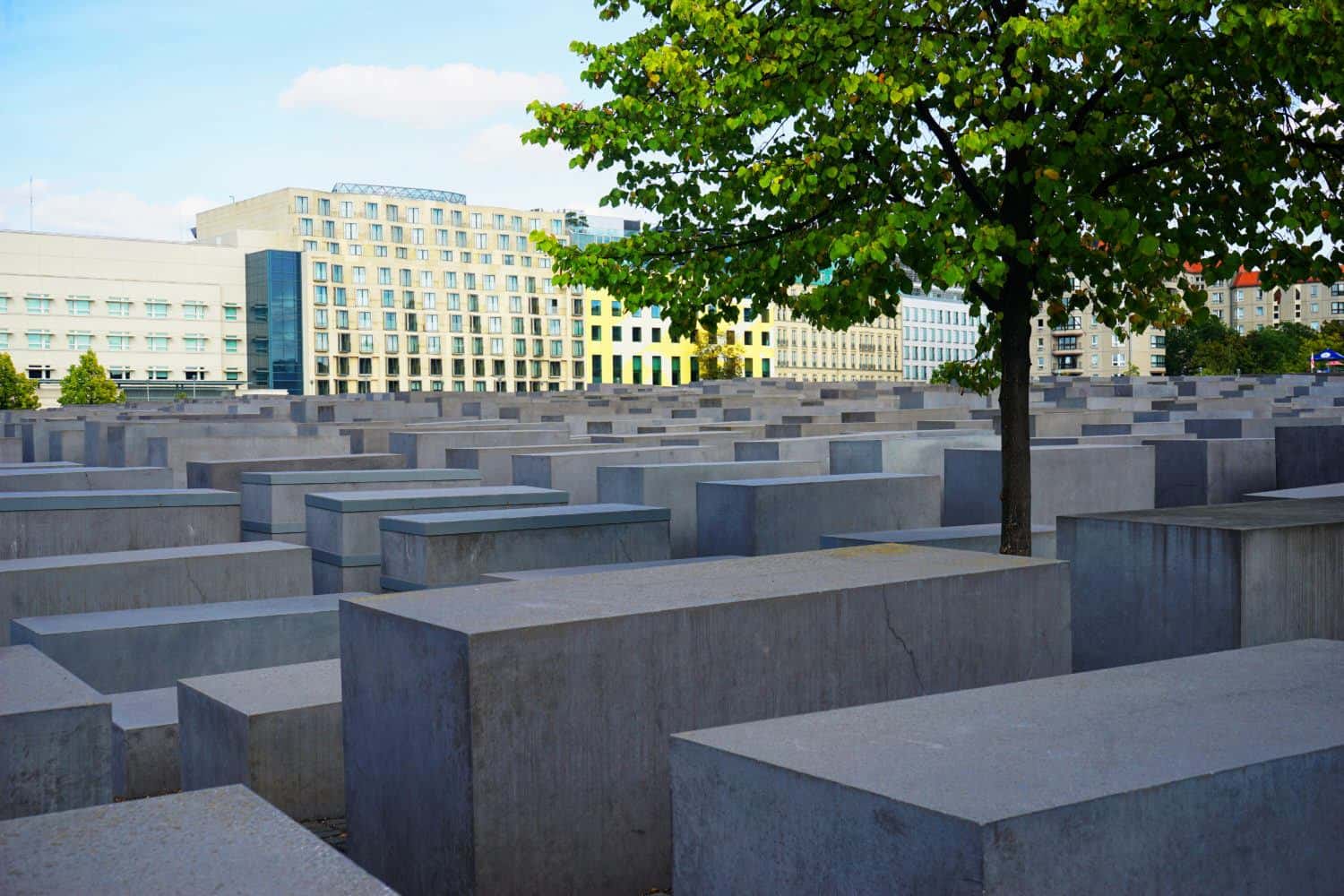
Appearing on several of the German euro coins, the Brandenburg Gate is often used as a symbol not just of Berlin but the country as a whole, which surely entitles it to be the first stop on your tour. Completed in 1791, it later came to be seen as a symbol of reunification following the fall of the Berlin Wall.
In contrast to this neoclassical edifice is the Memorial to the Murdered Jews of Europe, a somber reflection on the legacy of the Holocaust built from concrete slabs; you can see them in my photo above. The uneven construction means that in some parts you find yourself completely hemmed in by the slabs, while at others they don’t even reach your knee.
It seems somehow appropriate that these two reminders of history should be located so close to the nation’s parliament building, the Reichstag, where Germany’s present and future is being decided. The building was restored in the 1990s and crowned with its distinctive glass dome, which you can ascend for expansive views of the surrounding area.
Head west to enter the Tiergarten, once a royal hunting park and now pleasure gardens for the public. At its heart is the Victory Column, topped with a golden goddess. It’s possible to scale the top for views over the surrounding greenery and the arteries of roads spreading out below, though we preferred the view from the Reichstag.
Keep going west and you’ll come to the Charlottenburg Palace, a sprawling straw-colored mansion picturesquely situated beside the water. The gardens, many of the park pavilions and certain rooms inside the palace itself are open to the public.
One of our favorite chambers is the almost absurd Porcelain Room, which stuffs as many dishes, vases, ewers and charges – all made from blue and white porcelain – into every available nook and cranny, giving the impression of a very well-to-do hoarder’s collection.
Where to stay in Berlin: Boutique Hotel Mittendrin’s charm lies in the thought and care that’s gone into decorating its rooms, Melding modern comfort with a European style that harks back to a slightly less minimalist age, it has the air of a genteel pension from the early 20th century.
Day Two: Berlin

Day two is all about heading east. Start off in the Gendarmenmarkt, a square framed on three sides by a trio of beautiful buildings: the German Church, the French Church and the Konzerthaus (return here in the evenings if you want to hear some world-class music in the stunning, 15-chandelier Great Hall).
Just south of this is the Checkpoint Charlie replica, where you can tip your hat to the memory of a Germany divided, before heading to the more dazzling sights of Museum Island.
On this UNESCO World Heritage Site, the Berlin Cathedral with its series of copper domes battles for attention with the Bode Museum, the New Museum, the Old Museum, the Humboldt Collection and the Pergamon Museum for the title of most eye-catching building. If you’re interested in historical artifacts and art throughout the ages, you’ll be in absolute heaven.
You can easily spend an entire day (or even more) wandering through the Greek sculptures, impressionist paintings and full-scale reconstructions of wonders like Babylon’s Ishtar Gate.
Just make sure you leave enough time to grab a bite at one of the Markthalle Neun’s food stalls, before crossing over the Oberbaum Bridge to the east of the Spree. Here, the open-air East Side Gallery features iconic graffiti (think Leonid Brezhnev kissing Erich Honecker), sprayed across remnants of the Berlin Wall.
There’s also a relatively new museum, opened in 2016, documenting the history of the wall as well as the human stories of the people affected by its erection.
Remember as you wander through the city to keep an eye out for stalls and kiosks selling some of Berlin’s famous street eats. It may surprise you to learn that this is the birthplace of the doner kebab, but you also shouldn’t miss out on the whole range of sausages, from the mildly piquant currywurst to the bratwurst and the bockwurst.
Rather than going out of your way to find the so-called ‘perfect’ version, we’d recommend just trying your luck as you go along – it’s pretty hard to go wrong.
Day Three: Day Trip to Potsdam!
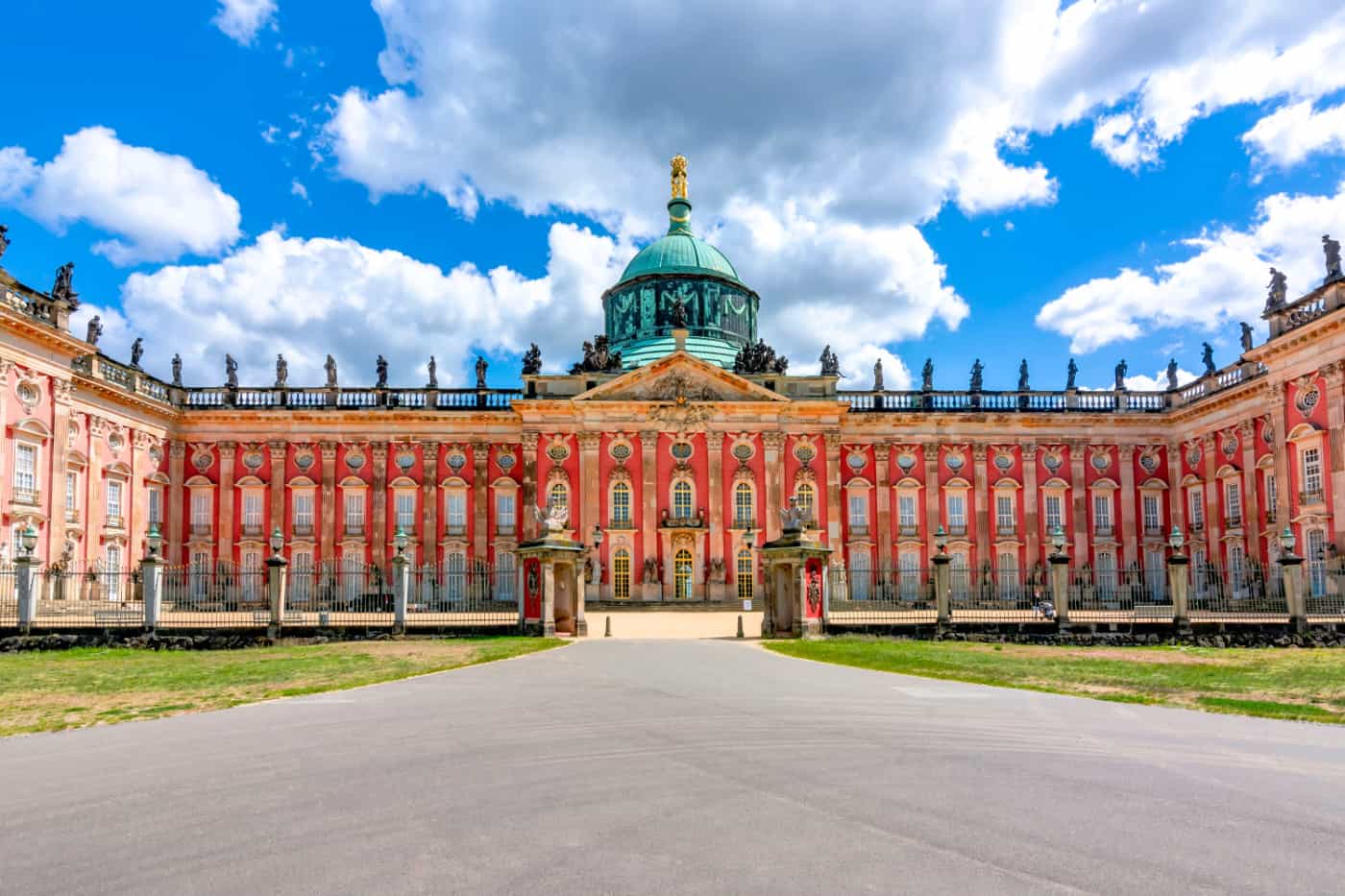
Just outside Berlin, a mere half-hour day trip by train, is the city of Potsdam and its famous Sanssouci, a lemon-colored confection of a palace. The building is fairly small given its outsized reputation. As you are hurried through the handful of rooms, elbow to elbow with other tourists, you’d be forgiven for wondering if you really need to visit this minor example of the rococo style.
What makes it worthwhile, however, is really the whole ensemble of the palace grounds. The principal edifice has been cleverly placed atop a series of terraces to make it appear much grander than it is to visitors as they approach – an amusing trompe l’oeil.
It’s also set amidst parkland with a series of follies, including the striking Chinese House, a mint-green pavilion gilded with orientalist figures playing instruments or seated in the lotus position.
Beyond Sanssouci, which was built as a sort of private residence for Frederick the Great, there’s also the so-called New Palace, built just a few years later than everything else. This is a much grander, more imposing building, designed not to entertain friends but to awe official visitors.
While many of the 200-plus rooms remain closed to the public, visitors can still marvel at the chessboard-like floors and the curved golden ceiling of the Marble Hall as well as the Grotto Hall, which is bedecked with thousands of seashells.
Day Four: Hamburg
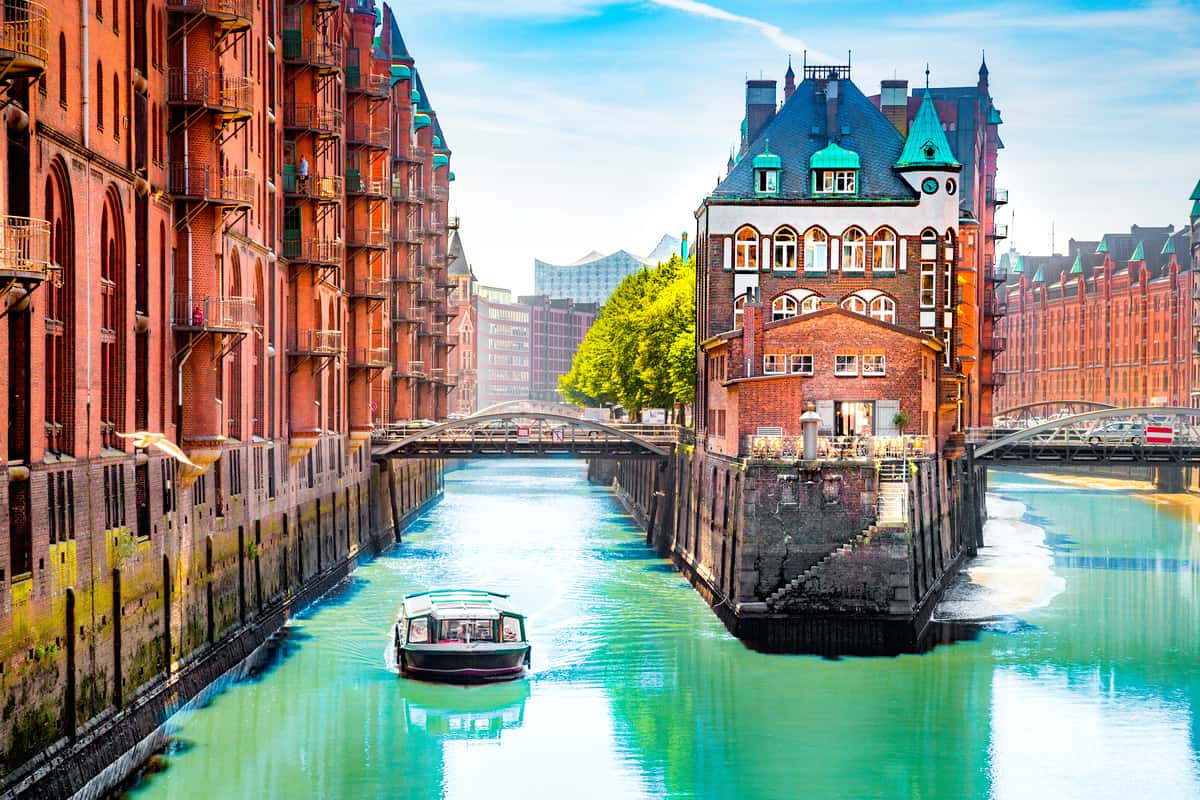
Travelling around Germany by train is generally the easiest way to make your way across the country. The rail infrastructure is efficient, fast and convenient – just make sure to book long-distance trips in advance to take advantage of cheaper prices.
Hamburg, for instance, takes just two hours to reach from Berlin. For hundreds of years, the city has built its prosperity and reputation on trade. Even today, some of its most famous areas are related to this past, including the Speicherstadt district, built in the late 1800s and famous for its red-brick port warehouses (some of which now house museums).
These stand in striking contrast to the HafenCity, a more modern area that experiments with steel and glass.
The best way to get a feel for these buildings is to hop on a harbor cruise, which will take you on a relaxing ride down the city’s waterways, complete with an audio guide to explain how the area was developed over time.
Make sure you don’t miss the Elbphilharmonie, the beautiful new concert hall that resembles a sail – yet another tribute to the importance of Hamburg’s maritime past.
Once back on land, you can explore the interiors of some of the Speicherstadt warehouses, including Miniatur Wunderland, a surprisingly engaging series of halls containing closely observed miniature versions of real-life destinations, including Alpine climes, Las Vegas, Venice and Hamburg itself.
If you have a penchant for architecture, it’s also worth exploring the Brick Expressionism of the neighboring Kontorhaus district, particularly the Chilehaus, a sharply defined, many-windowed façade that broods over the streets.
Next, head to the main square and the Rathaus, aka the town hall. Grab a beer from one of the vendors off the square and take a moment just to appreciate the majesty of the building.
Finish the evening with a trip to the Reeperbahn, Hamburg’s red-light district, which has become a bit of a universal party spot, mixing in numerous trendy bars and hip restaurants amidst the more seedy elements of brothels and strip clubs.
Where to stay in Hamburg: If you want a unique accommodation experience, stay at Chez-Ronny’s, a wackily decorated place that reflects all the cheeky, red-light-district flair of its Reeperbahn location – but mercifully with attention to cleanliness prioritized.
Day Five: Cologne
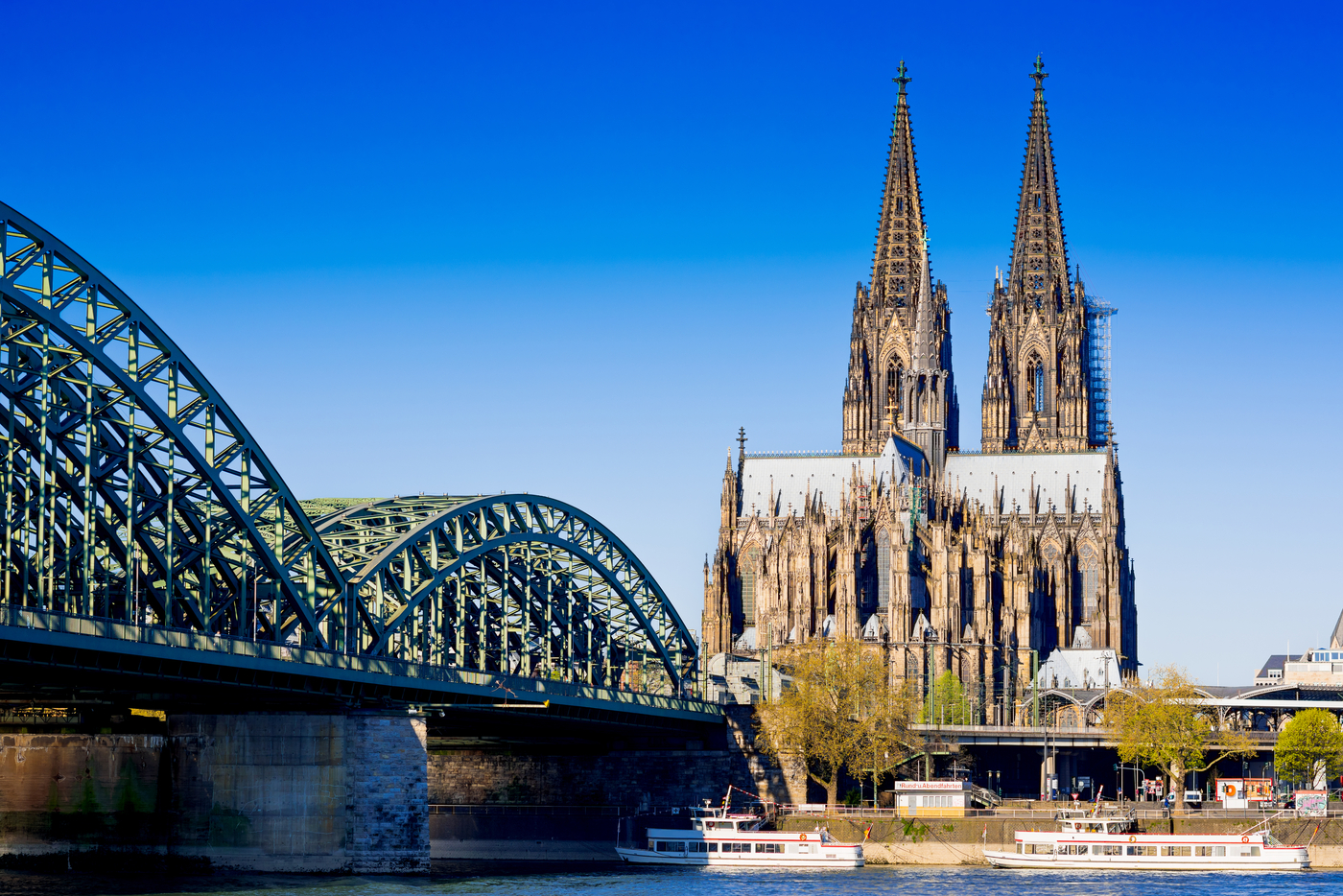
Another train ride (this one slightly longer) will take you to Cologne, a city as unlike Hamburg as Hamburg is unlike Berlin. While many perceive Cologne to be slightly less modern and cool, it does boast Germany’s most visited landmark, the city’s enormous cathedral.
This gothic edifice was begun in the 13th century, but due to the sheer scale of the project took more than 600 years before being finally completed.
It’s easy to see why. This is a monstrous beast of a building, sublime and ominous, threatening visitors with the might of the church – at least, that’s what it seems like when you’re standing beneath its massive body.
The façade is covered in detail, particularly the main entrance, which is flanked by religious figures that each have distinct expressions carved into their faces.
The interior is no less stunning, the vaulted ceilings and stained glass creating a gasp-inducing splendor. Scramble to the top of one of the towers – an arduous climb even for a fairly fit individual – and you’ll be rewarded with panoramic views of the city as well as close-ups of the stonework that graces the roof.
Nearby sits the Romano-Germanic Museum, built to cover the wonderfully preserved Dionysus Mosaic, which was discovered by chance when the German government was attempting to build an air raid shelter on the site. It now contains ancient artefacts from the surrounding region as well as the world’s largest collection of Roman glass.
You can’t leave Cologne without trying some of the local Rhineland specialties. Head to the old town, which boasts a number of restaurants amidst the colorful houses, cooking up such classics as Himmel und Erde (‘heaven and earth’), a mélange of apple sauce (from the heavens), mashed potatoes (from the earth) and black pudding (because what German dish is complete without pork?).
Where to stay in Cologne: Considering its central location, just steps from Cologne’s main attractions, the recently opened Legend Hotel is a great find. We’re particularly in love with the spacious rooms, outfitted with all the mod-cons.
Day Six: Day Trip to Aachen
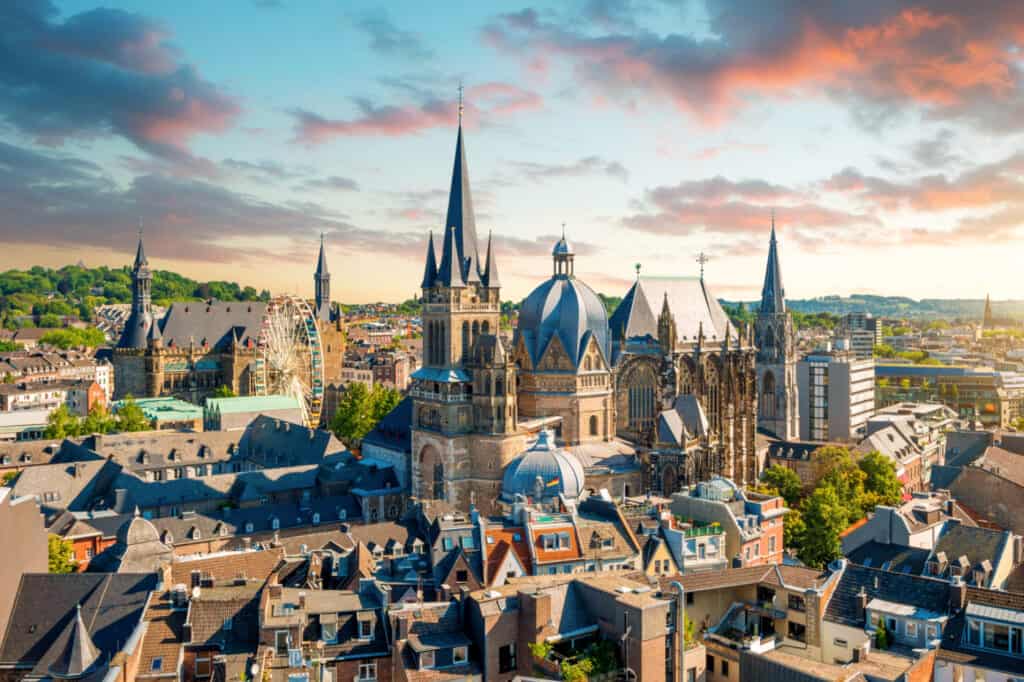
A brisk day trip from Cologne, Aachen was for several hundred years the city where the Holy Roman Emperors were crowned. Favored by Charlemagne the Great, it was at his behest that the city’s grand cathedral was built. While not as humongous as Cologne’s, its core is significantly older.
The octagonal Palatine Chapel was begun in the early 800s. Stepping inside, you’ll immediately notice that it’s unlike most other religious structures you’ll visit in Germany. The golden, Byzantine-style mosaics are almost dazzling, in stark contrast to the very plain Throne of Charlemagne on the dais at its center.
Later ages enlarged the original structure, putting in the beautiful stained-glass windows and (rather indecorously) digging up the remains of Charlemagne to be placed in an elaborate golden casket known as the Karlsschrein.
While we would argue this is the most stunning artefact in Aachen, the adjacent Cathedral Treasury is not short of other incredible jewels, including the silver-gilt Bust of Charlemagne (said, rather grimly, to contain part of his skull) and the Cross of Lothair, studded with more than 100 precious stones and pearls.
If you’re scratching your head and trying to work out why Charlemagne is such an important figure around these parts, there’s a whole museum dedicated to the topic, with exhibits on Carolingian history as well as details about the evolution of Aachen.
There is one other thing we’d recommend you do before heading back to Cologne, and that’s to visit the Rathaus. This town hall is particularly odd because its two facades seem to have been designed in a totally different style, perhaps down to the many fires the building has suffered over the years.
One side is sturdy stone with minimal decoration, while the other is covered with the kind of spectacular gothic detail also found on Cologne’s cathedral.
Day Seven: Frankfurt
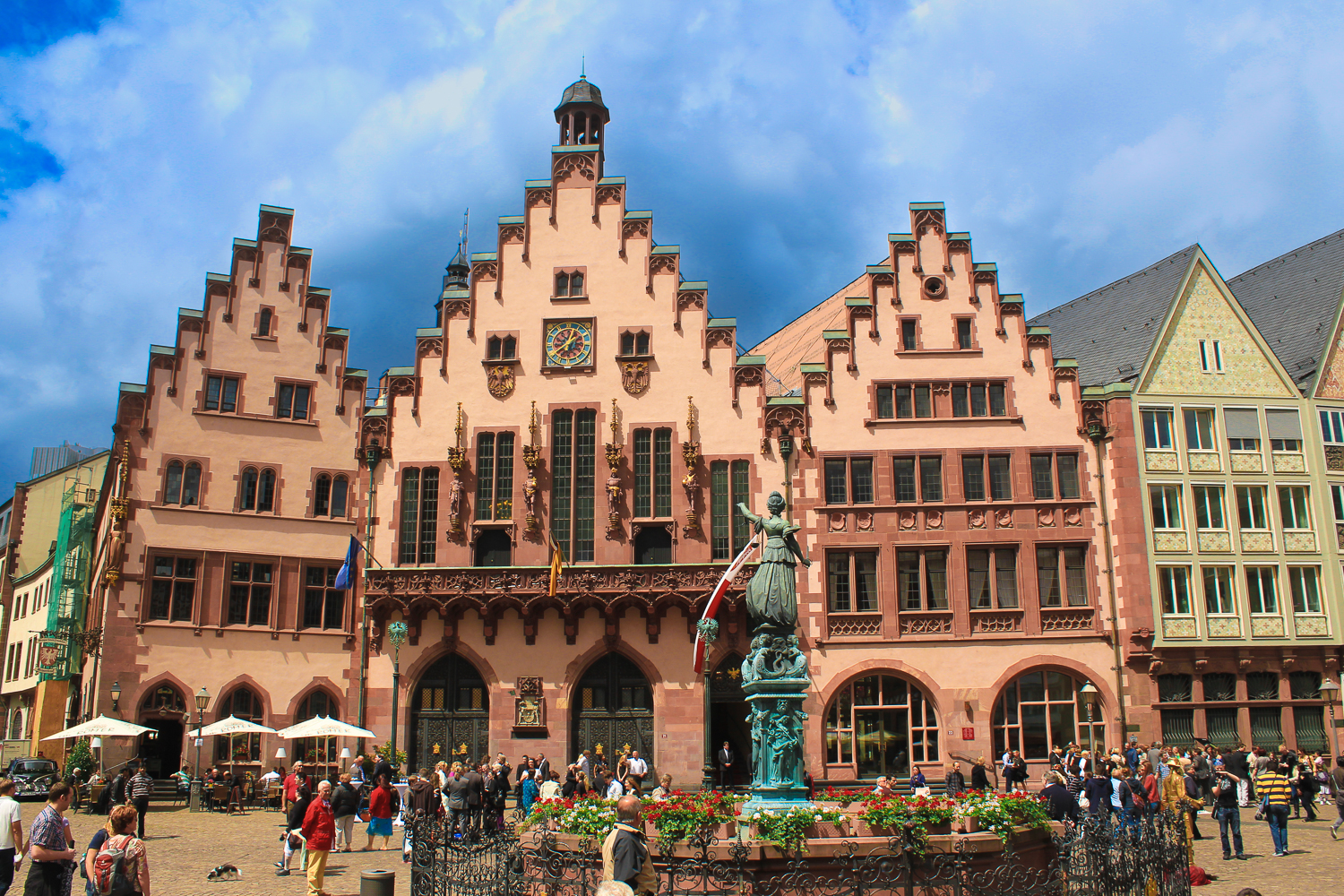
Time to get on another train and move onto the next port of call, Frankfurt. While this city is the epitome of modernity, it’s not really what one could call a tourist hotspot. Instead, it’s a good transport hub to visit a couple of smaller but stunning cities in the surrounding area.
Still, since you’re in town, you may as well explore what the city does have to offer: a smorgasbord of sausages, cheeses and fresh produce at the Kleinmarkthalle; the haughty skyscrapers of the financial district; and apfelwein, a sour, cider-like concoction that is the traditional tipple.
You can also take a stroll through the reconstructed old town, in particular the Romerberg Plaza, though personally we found it a tad sad to be reminded how pretty it must have been before bombs leveled the district during World War II.
Where to stay in Frankfurt: Since Frankfurt is really only a jumping off spot for other places, what we really recommend is somewhere functional and comfortable that you can return to after a long day and just collapse. Villa Hotel offers that in the form of a building that is vaguely reminiscent of a traditional guesthouse, located just 20 minutes walk from the main train station.
Day Eight: Day Trip to Heidelberg
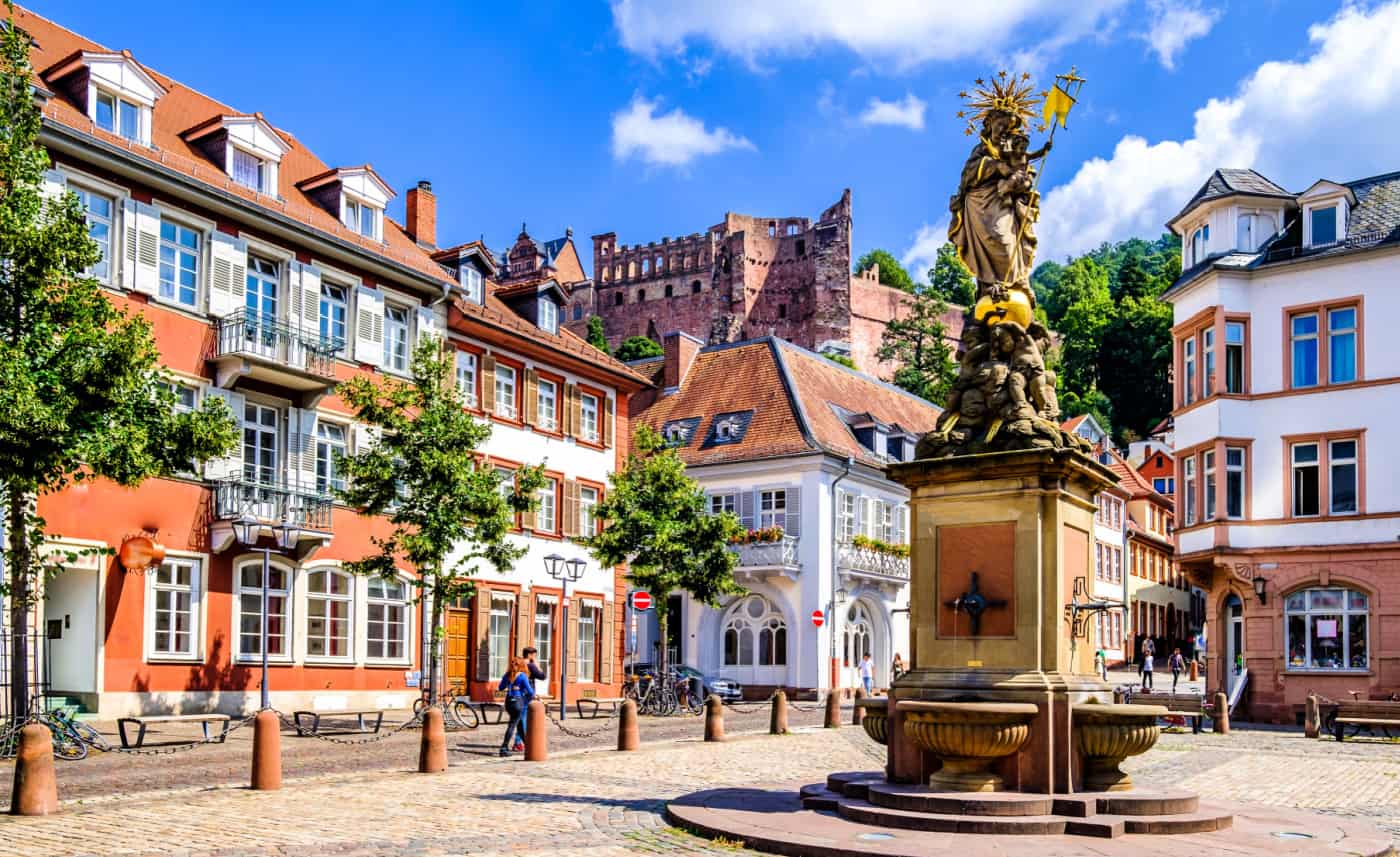
Just remembering the charming little city of Heidelberg gives us tingles. A mere one hour from Frankfurt by rail, its skyline is dominated by the romantic ruins of the Renaissance castle. Part of the structure has been rebuilt over the years, though, ironically, it was the invasion of the architectural skeleton by nature that inspired the great poet Goethe and what continues to make the experience so magical.
Before catching the funicular or hiking up to these remnants, however, take the time to explore the town, which was the site of Germany’s first university and is still filled with students today. Stroll along the Hauptstrasse, pausing in the Marktplatz to enjoy a drink and some food at one of the many umbrellaed tables. From this perch, you can gaze up at the red bricks and slate-colored tiles of the Church of the Holy Spirit.
For the best panoramic views of Heidelberg, cross the River Neckar and wend your way along the Philosopher’s Walk, so called because it purportedly inspired contemplation in the town’s professors – though we were more distracted by the stunning vistas.
Day Nine: Day Trip to Baden-Baden
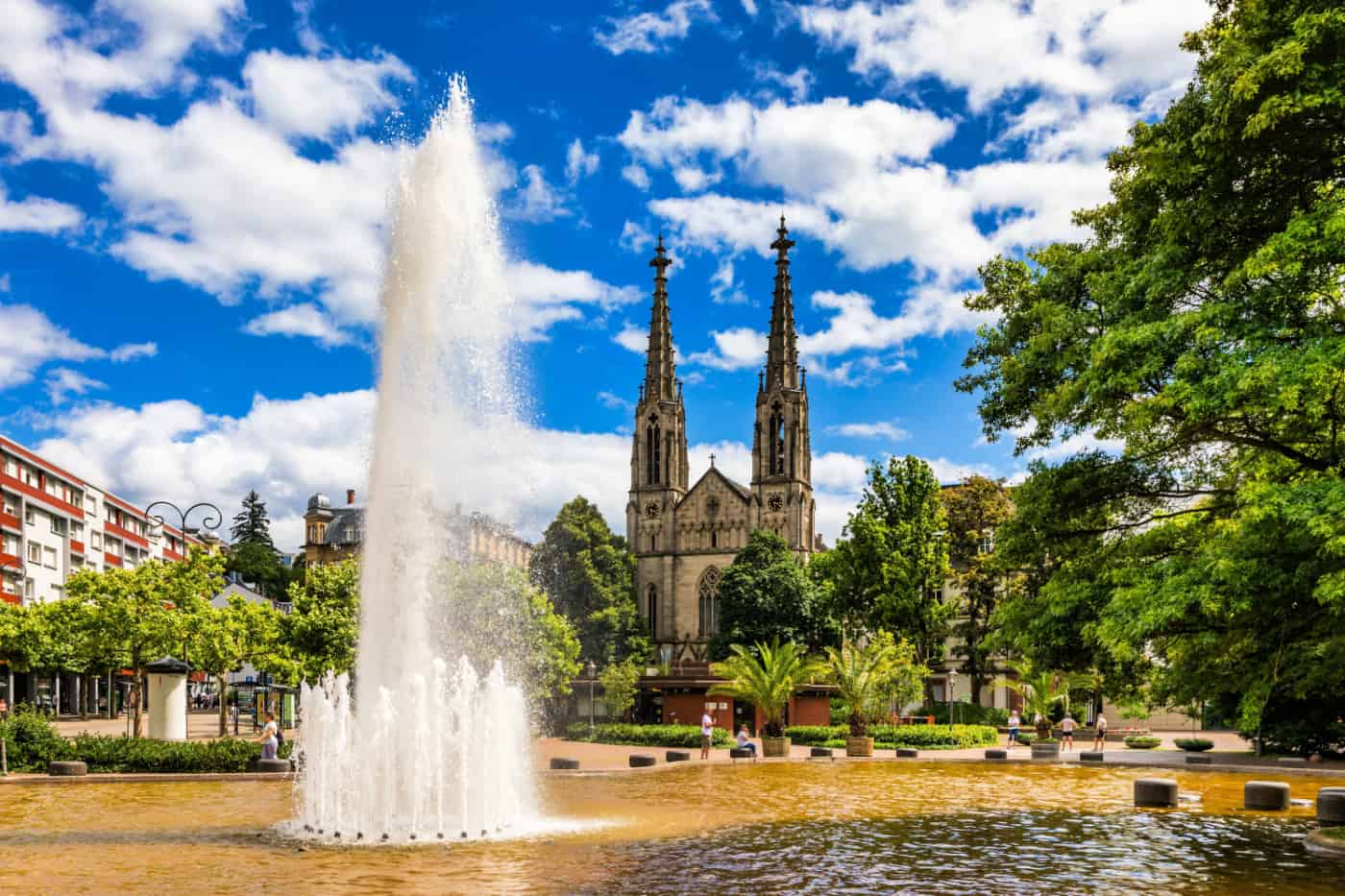
Once upon a time, the wealthy flocked to the Black Forest and the spa town of Baden-Baden as a restorative retreat for all sorts of ailments, real and imagined. Today, the destination retains its elegant veneer, boasting an opulent, James Bond-worthy casino and many options when it comes to ‘taking the waters’.
If you’re going to experience something as a travel adventure, you have to commit, which is why we recommend the Friedrichsbad Spa, the oldest joint in town that is (in)famous for requiring patrons to be completely nude, whether that’s during the scrub down, massage or paddling lazily in the thermal pools. Don’t worry if you don’t feel comfortable with this, however, as the nearby Caracalla Spa has a more lenient clothing-optional policy and very smart, modern facilities.
But we’re not in Baden-Baden just to be pampered, though it would be perfectly reasonable to break your 14 days in Germany with a day of pure bliss. Instead, explore a tiny portion of what the fairy-tale-inspiring Black Forest has to offer.
While we can’t guarantee you’ll stumble upon Rapunzel’s tower, there are lots of circular walks that are particularly perfect for the warmer months, running over hills, past lakes and through verdant woodland.
Day Ten: Nuremberg
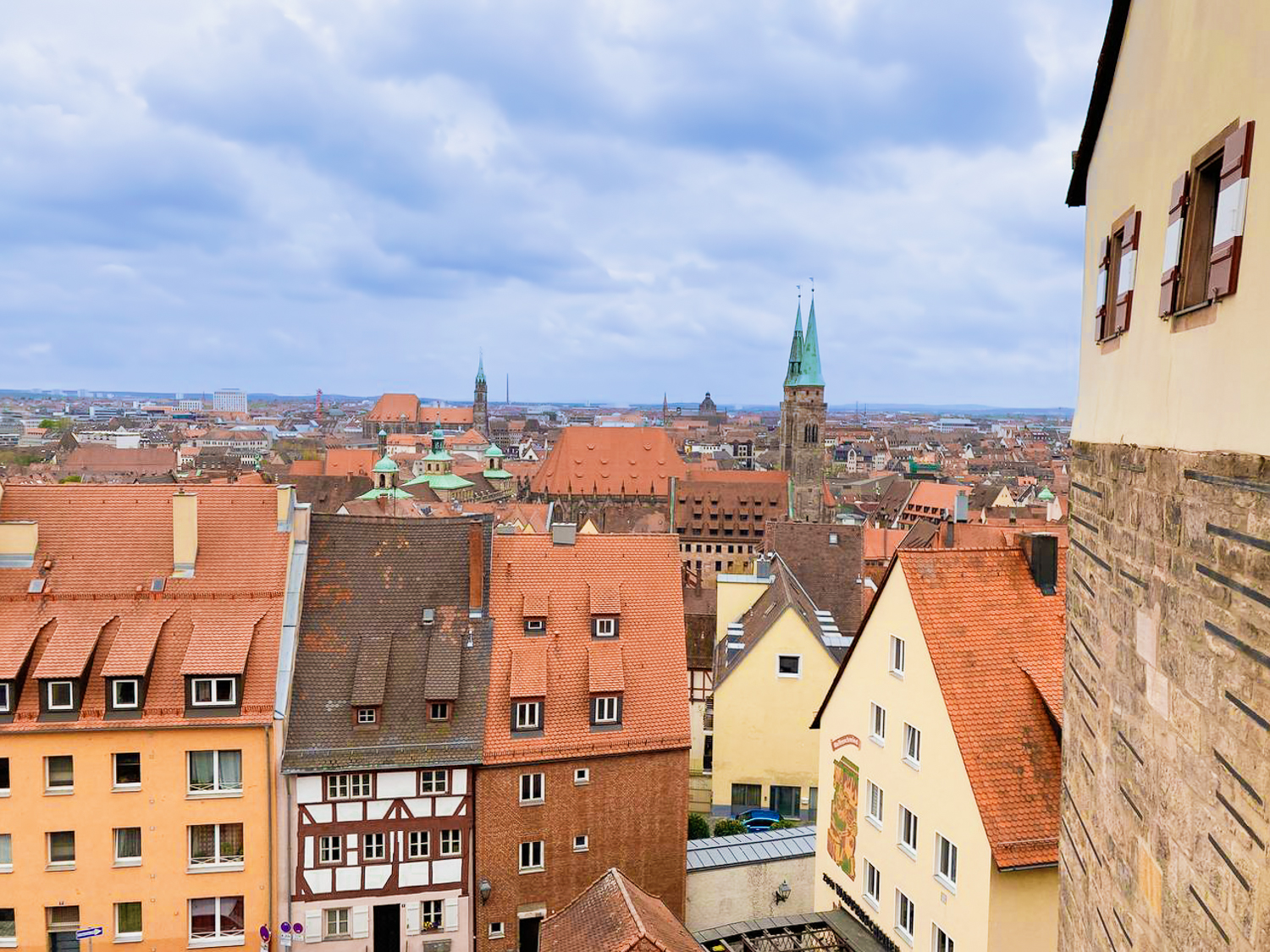
In some ways, Nuremberg is like a giant model, a miniature wonderland but life-size. Seen as a symbol of the Nazi party, the city was bombed relentlessly towards the end of World War II, and most of its old town, its castle and its churches were obliterated.
Many years of reconstruction have gone into making it the pretty place it is today, a place particularly famous for its historic Christmas market.
Like many German cities, the heart of Nuremberg is its main square, the Hauptmarkt, which hosts a farmers’ market several times a week. Bustling with life, you can grab a morning coffee on the square and watch people shuffling between the magnificent gothic facade of the Frauenkirche, whose prominent mechanical clock bulges outwards, and the Schöner Brunnen, a golden fountain built in the shape of a church spire.
Wander north along cobbled streets and you’ll come to St. Sebaldus Church, originally built in the 13th century and boasting a large, Romanesque basilica that looks a bit like a prolonged Victorian bustle.
Just a couple of streets over is the Albrecht Durer’s House, which from the outside presents a curious combination of sandstone lower floors and timbered upper floors. Inside, you can see some of the artist’s many works as well as get a feeling for how people lived during the German Renaissance.
Looming over the building – and, indeed, most of the old town – is Nuremberg Castle. From its walls, you can obtain wonderful views of the surroundings, though the interior is a shadow of what its former grandeur must have been.
Further out of town are the remnants of the Nazi Party Rally Grounds. Ironically, the unfinished Congress Hall, designed by Hitler’s architect Albert Speer, survived the Allied bombing better than much of the medieval structures.
Today, it houses the Documentation Center, an exhibition that explains Hitler’s rise to power. When we visited, this was under renovation, so only a truncated (but still informative) version was available (the main exhibition is due to reopen in 2024).
You can’t leave Nuremberg without trying the local bratwurst, protected under EU law and often served three to a bun. You’ll find it all over the city, but we can heartily recommend the Zum Gulden Stern as a piece of living history. It claims to be the oldest bratwurst restaurant in the world and really lays on the old-timey tavern charm.
Where to stay in Nuremburg: The comfortable Hotel FIVE doesn’t roll out the frills, but it’s got a great breakfast, bright rooms and comfortable beds to crash into after a long day of hyperactive exploring. Additionally, it’s ideally situated downtown.
Day Eleven: Day Trip to Rothenburg ob der Tauber
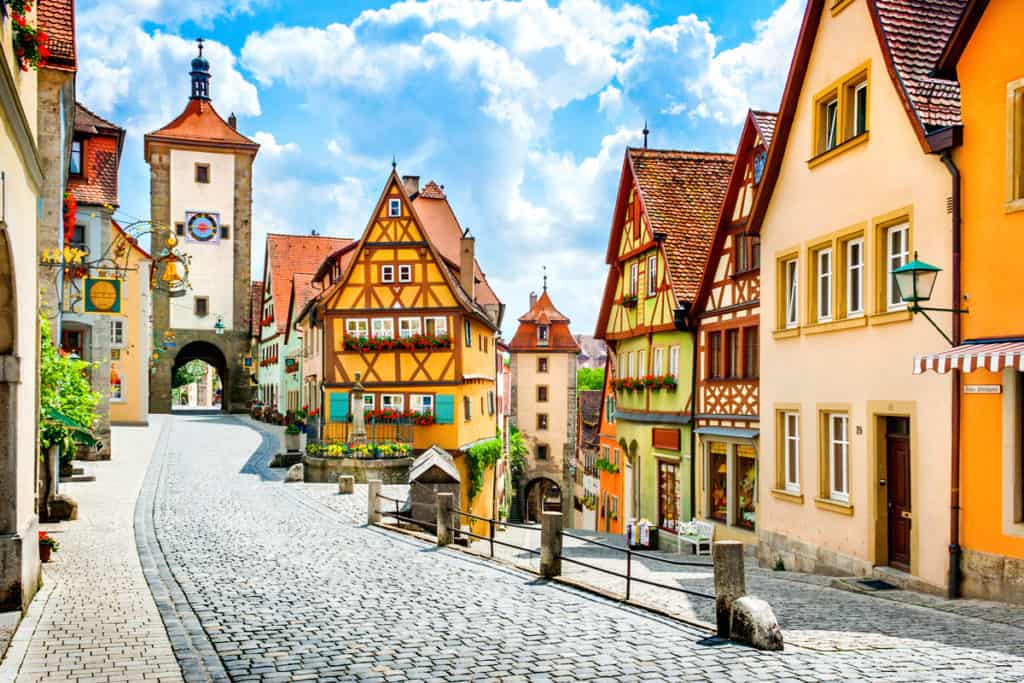
Imagine a romanticized image of medieval life and you’re probably picturing something very similar to Rothenburg. Located on the Tauber River, it’s sometimes called the prettiest town in all of Germany. Cobbled streets zigzag past quaint houses, which have been painted in a variety of pastel hues and are encircled by some of the best-preserved city walls in the whole country.
Head first to the Rathaus, where you can scale the tower to obtain a general overview of the town and the lush valley beyond. As you’ll see, Rothenburg is not a big place. While in the Middle Ages its population was one of the largest in what is today Germany, it has only grown a relatively small amount since then.
Wending your way past St. Jakob’s Church, along the Plonlein intersection and through the chunky Spitaltor gate, it definitely feels packed to the brim by the number of visitors flocking here.
Nevertheless, you’ll be hard-pressed to find a prettier habitation to visit than Rothenburg. Take one of the street tours through town to maximize the experience and really learn about what life was like in a medieval town.
Day Twelve: Munich
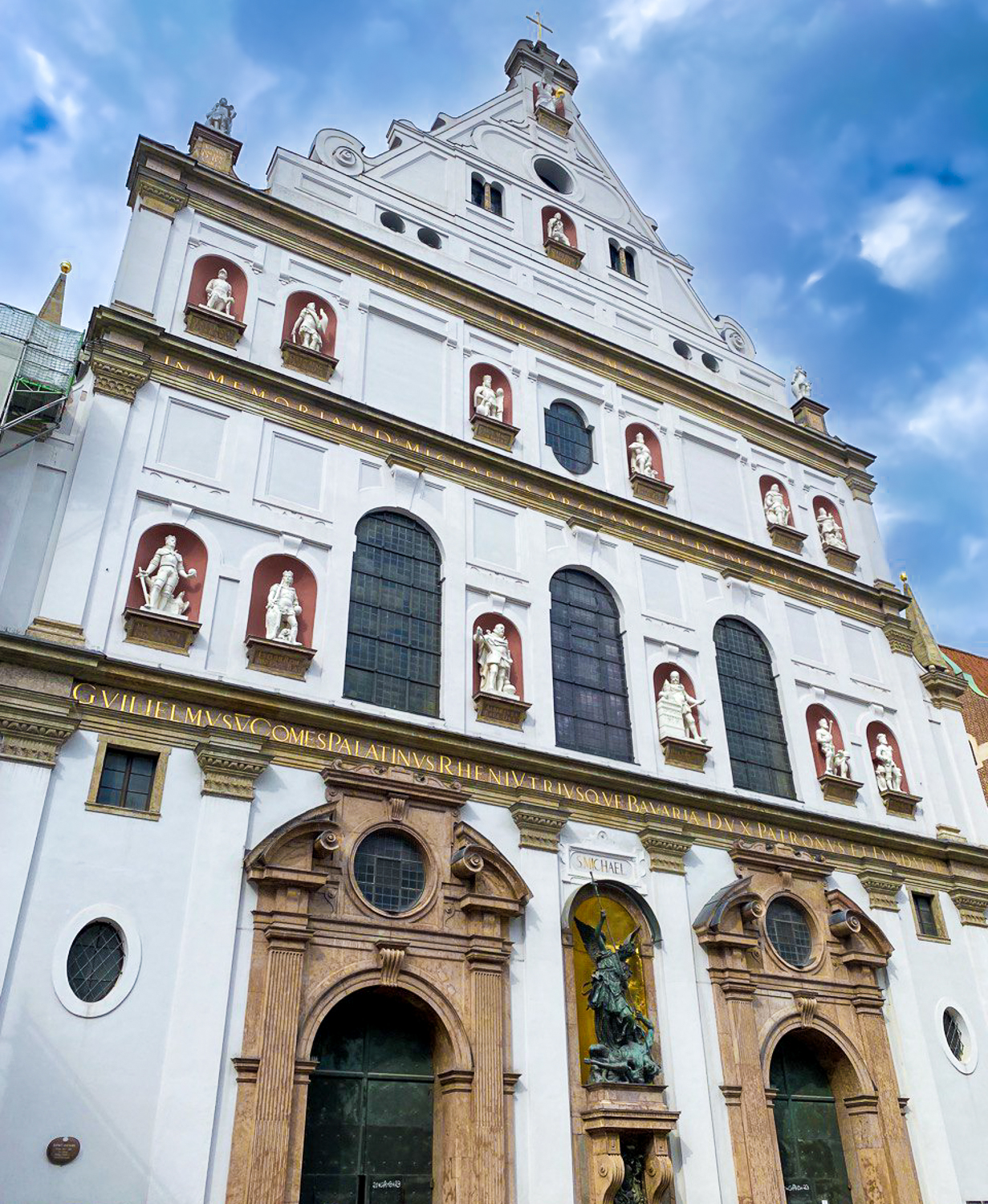
The last few days of your Germany itinerary should be based out of Munich, the nation’s most desirable (and most expensive) locale. A city of staggering architecture, relaxing green spaces and, of course, beerhouses, it easily ranks among our favorite places in Germany, if not Europe.
Once you’ve arrived in the city (again by train) and dropped your luggage at the hotel, grab a pretzel from a stand in the Marienplatz to begin your day right. The Neue Rathaus is built in the gothic revival style – we never get tired of the vague thrill of terror that gothic facades inspire – and boasts an amusing glockenspiel cuckoo clock that chimes three times a day (try and time your visit accordingly).
From here, make your way north, passing the Frauenkirche, whose distinctive towers, topped by twin green domes, can be seen for miles around. You’ll soon come to the Munich Residenz, a boxy, rather bland-looking complex of buildings that hides a series of gloriously luxurious rooms. It’s hard to know what highlights to focus on.
Should it be the barrel-vaulted Antiquarium, decorated by 16th-century paintings and lined by Roman busts? The Perseus Fountain, adorned all over in seashells? The stately Niebelungen Halls with their gilt-framed ceiling paintings and rosy-colored marble doorways?
Or the Rich Chapel, a room absurdly luxurious for its modest size, stuffed full of relics and marble, and crowned with a gleaming ceiling of Prussian blue and gold?
It’s a lot to take in, so after you’ve finished your tour, take a break in the expansive Englischer Garten. We spent a good couple of hours here beside the lake, processing the experience of the Residenz with a stein (or three) of beer.
Speaking of beer, you have to visit at least one beer hall while you’re in Munich, even if they are a little touristy. Hofbräuhaus is a good option for the ‘traditional’ experience, complete with oompah band, copious beer and Bavarian specialties like schweinshaxe (pork knuckle).
Where to stay in Munich: What we like about the Landhotel Klostermaier is that it feels very authentic; a traditional guesthouse with the added bonus of a complimentary sauna. It is a bit further out of town, but you trade location off against the scenic countryside and value for money. Plus, it’s got convenient access into the center via the nearby S-Bahn station.
Day Thirteen: Day Trip to Neuschwanstein
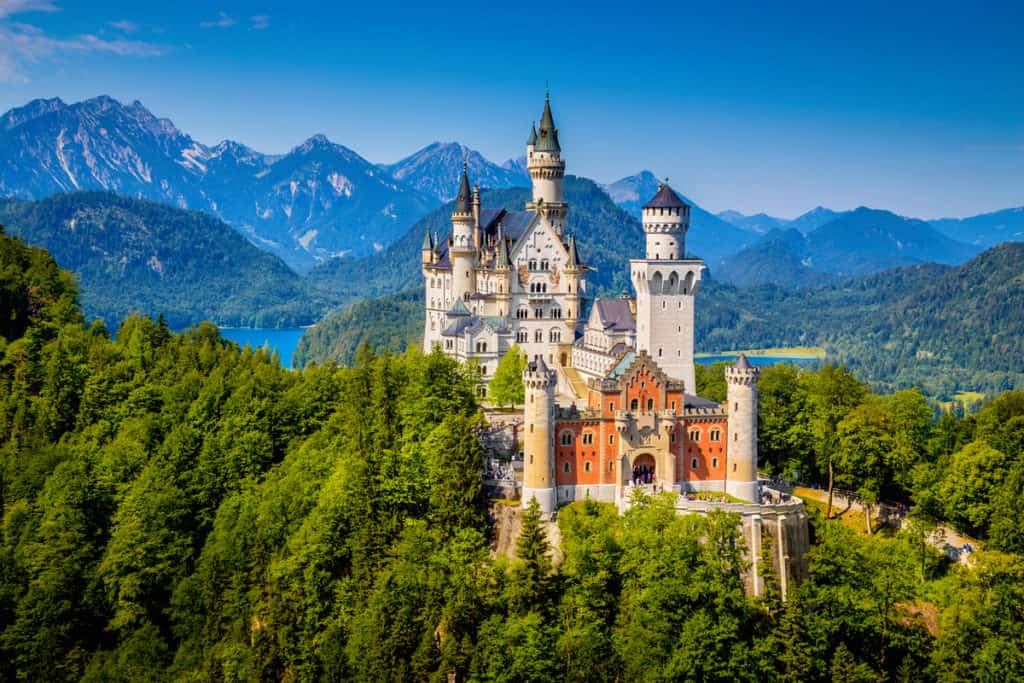
Said to have inspired Disney’s Cinderella castle, Neuschwanstein is the jewel of Bavaria. Built by the extravagant (and possibly mad) King Ludwig II, it’s iconically perched atop a forested hill, seeming to rise out of the landscape like a white swan from an emerald lake.
The tour inside the castle itself is all very choreographed, with the guides moving everybody through at a fairly brisk pace so that the next lot can bundle in. Only a handful of rooms were ever completed, but what does exist shows Ludwig II’s flair for the dramatic and ostentatious.
Take the time to wander the trails that crisscross around the area, not just because they offer several different perspectives of Neuschwanstein, but also just because it’s darn pretty! On a neighboring hill, a short walk away, you’ll also find Hohenschwangau Castle, a sandy-colored edifice that’s not quite as glamorous but worth seeing while you’re in the area.
It’s perfectly feasible to make your own way from Munich to Neuschwanstein. In fact, the train ride to the town of Fussen runs through some beautiful scenery. From there, you transfer to a local bus that’s hard to miss – everybody else getting off at the station is almost certain to be heading in the same direction.
If you want to eschew the burden of organizing the trip yourself, however, there are also plenty of tours you can take instead. This is a good option if you want to tag on a visit to the Linderhof Palace, another Ludwig construction but smaller in scope. These tours are popular, so do book in advance if you’re planning on jumping on one. You can check availability for your travel dates using the widget below:
Day Fourteen: Munich
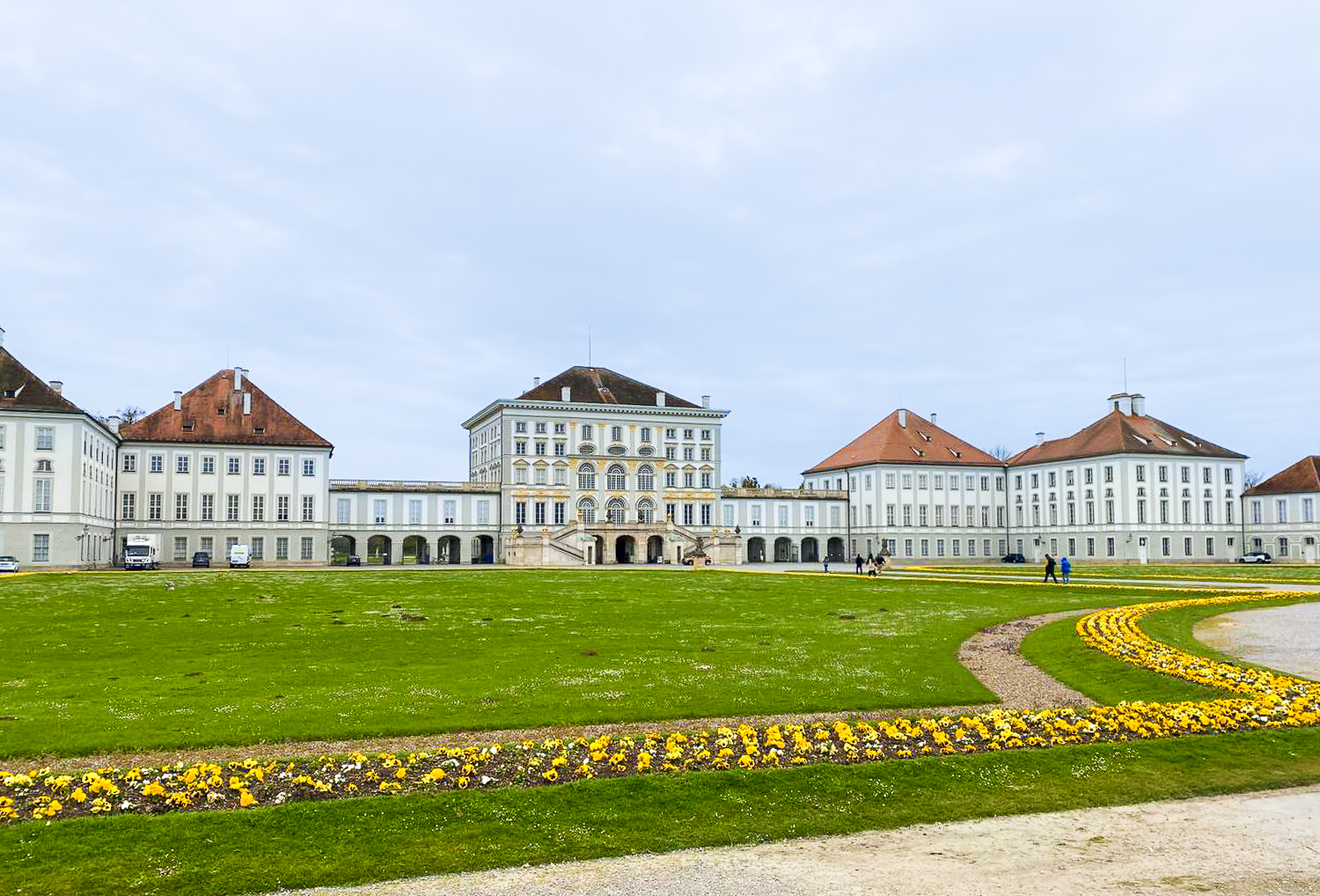
One of the final things to do before leaving Germany is to visit the Nymphenburg Palace. Built to resemble the Italian villas of Palladio, it’s centered on the three-story-high Stone Hall, which is covered with elaborate stuccowork and topped with an enormous fresco.
Aside from the palace itself, the parklands are filled with numerous outbuildings, including a luxurious hunting lodge and a pagoda whose exterior looks neoclassical but whose interior is inspired by the 18th-century vogue for Chinoiserie.
If you’ve still got a spare half hour, drop into the Asam Church on your way back to town. This narrow structure, squeezed between two other buildings, takes Baroque overstatement to crazy new heights, even when compared to Nymphenburg. Maybe bring ski goggles.
And That’s How You Spend Two Weeks in Germany!
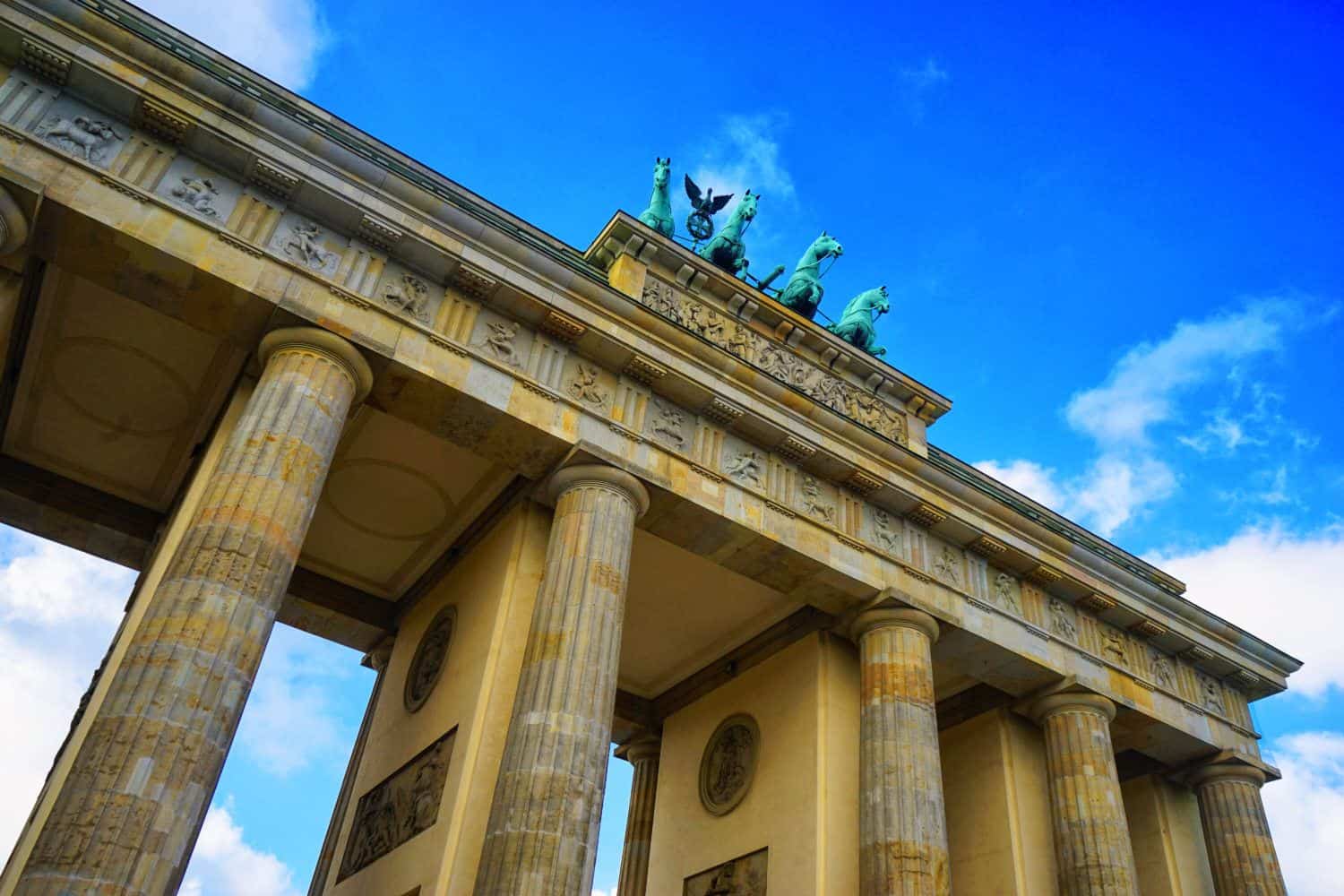
It might seem like a lot of kilometers to cover on a trip to Germany for two weeks, but the truth is public transport in Germany is just so convenient and (at least in our experience) reliable.
In most of the places you visit, all the beautiful buildings of the old town are within walking distance – and even when you need to travel a little further, the local subways and buses are user-friendly and a breeze to navigate.
It’s truly worth making the effort to cover as many regions as possible, just because Germany’s states all have such a bounty of landmarks, style – and food specialties based on pork!




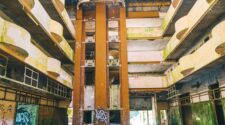

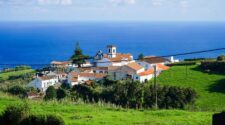
I have been living in Germany for a very long time. Whenever I meet a person who is traveling to Germany or already here I always recommend Bamberg (about 45 minutes from Nürnberg). Bamberg has one of the most sketched buildings in Germany, the old city hall that juts out of a beautiful bridge. Bamberg’s old city is a UNESCO World Heritage site, contains a pretty cathedral, and has 11 breweries. Great combination with beer and architecture. Actually the county of Bamberg is renowned for the number of breweries.
Sorry for any misspellings. Language set on German and too stupid to change it to English.
Lastly, I just discovered your website. Pretty darn good. Will come back to it often.
Great! But why was Bonn, birthplace of the
Great Beethoven not included!
It’s hard to fit everywhere into two weeks! What would you recommend removing from the itinerary to make room for Bonn?